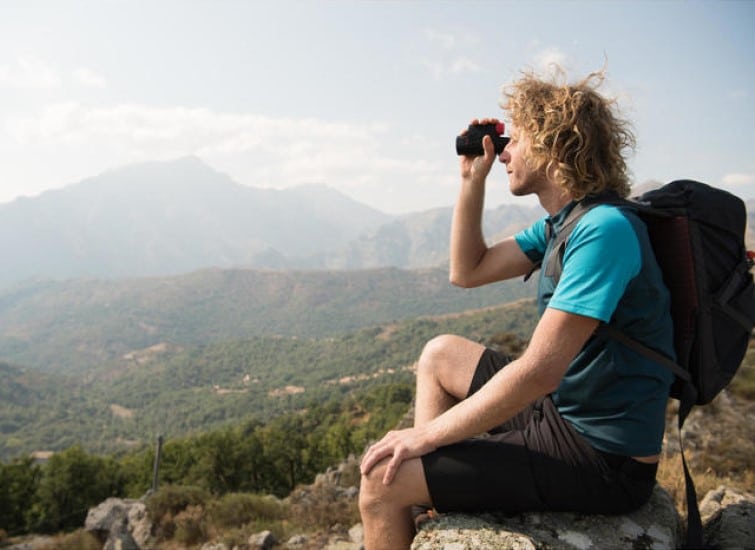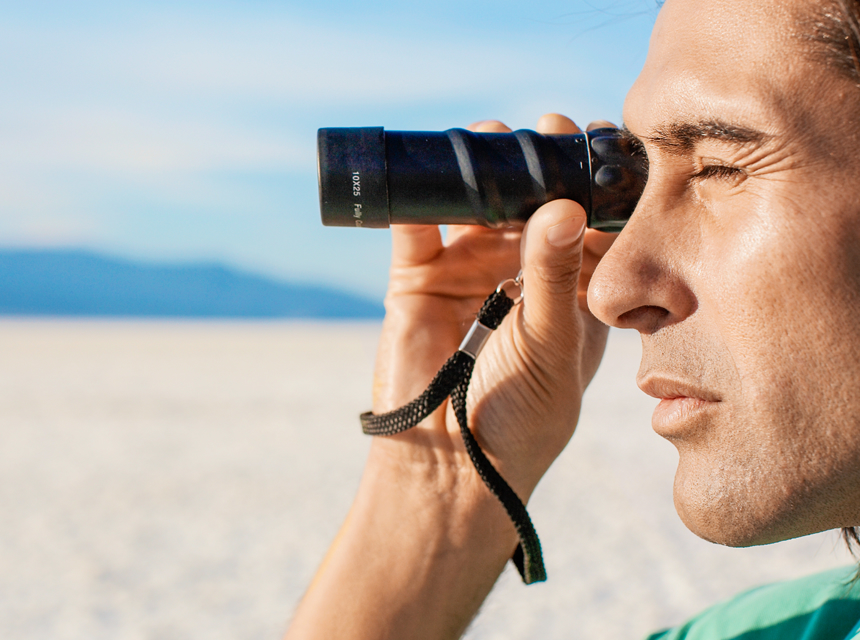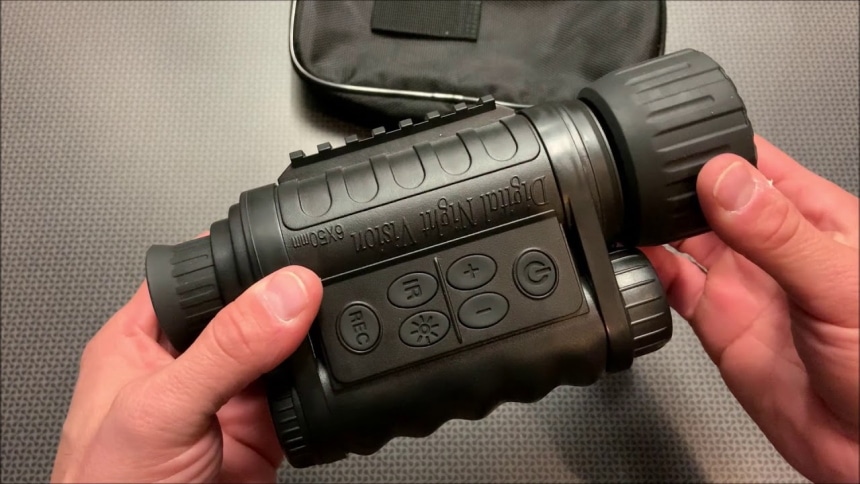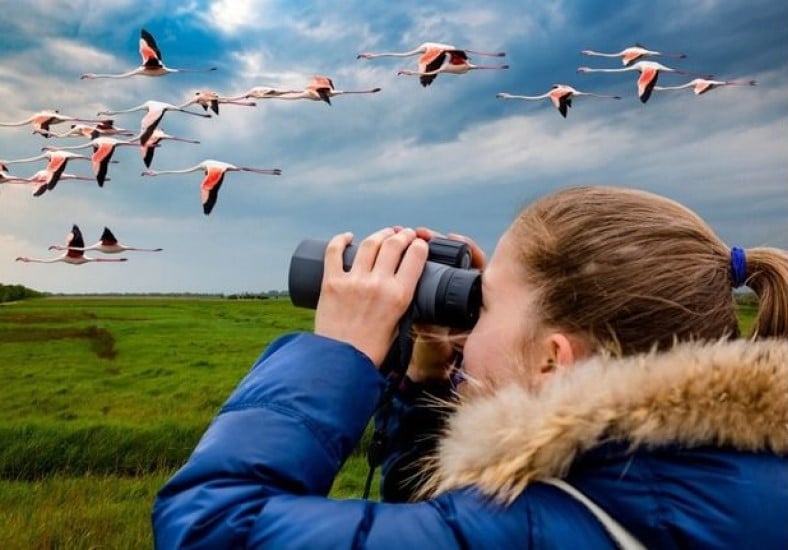

Size is the immediately noticeable feature when it comes to monocular vs spotting scope. So, does size play a role in their individual power and performances? We will discuss this in detail in this article so people who like astronomy or bird watching can decide on the best one for their needs. This is important because each of them is suitable for specific functions which we have explained in this guide.
We have analyzed the key features that you should keep in mind before making a purchase, and recommended when you should go for a monocular instead of a spotting scope, and vice versa. Some of the key features we have examined in this monocular vs spotting scope guide are the lens, field of view and magnification. We also reviewed how much they cost as well as their lifespan and portability.
We will start off with the different parts of a spotting scope.
Pros
Cons
Monocular share most features in the spotting scopes, but in a smaller size and with less power and capabilities. For instance:
Pros
Cons
Below is a breakdown of the main differences between monocular vs spotting scope that influences their performances and where they can be used.
Spotting scopes have larger features, advanced functions and greater capacity than monocular. The same applies to their tripods and accessories which normally increase their price range. However, there are scopes in the market that are reasonably priced and applicable for a wide array of activities. They are available in compact sizes, too.
The objective lens size, with diameter ranging from 15 mm to 50mm, determines the amount of light that a monocular or spotting scope can collect, and how bright and sharp the image will be. Manufacturers usually state this information about their products; the objective lens diameter and magnification for monocular, and the objective size for spotting scopes with fixed-length eyepieces that are interchangeable.
You can improve image quality in low-light conditions with larger objective lenses. So, consider a minimum diameter of 30mm if you would be using the scope in a dim environment.
Bear in mind that the size of the objective lens also correlates directly to the overall size and weight of your model, and sometimes the cost.
This refers to the widest measurement you can view through the scope or monocular. A wide field of view is preferable for tracking moving objects and for viewing more details. Please note that the field of view narrows as you increase magnification.
Usually, the magnification power of spotting scopes varies from 20x to 60x, while that of monocular ranges from 4x to 12x. For instance, Vortex Solo 10×25 Monocular has objective lens diameter of 25mm and magnifies objects by 10x.
Depending on your model, you can adjust magnification by zooming with a single eye piece or by switching fixed-length eyepieces. This allows you to scan objects at a long distance using lower power and increase the magnification power when you locate them. Eye pieces with fixed focal length are better at light gathering whereas zoom eye pieces excel at widening the field of view for detailed observation.
However, high magnification narrows the field of view, reduces the light received and increases vibrations and effects of heat distortion. This results in poor clarity and images that are too dark or blurry.
If you compare monocular vs spotting scope, monocular is the lighter of the two. This is because the size of objective lens imparts the size and weight of the model. Spotting scopes have larger objective lens and other components necessary for high magnification and image quality. This is why there are few compact spotting scopes that are portable. They also need to be supported by a sturdy tripod that can keep the scope stable during use and conveniently folded away for storage. You can adjust the legs of the tripod to position the scope at a height that will be comfortable for you when observing objects for an extended time.
This is in contrast to monocular which requires minimal set up because you can hold it when viewing objects.
Monocular and spotting scopes are mainly used outdoors where there is always a risk of damage from adverse natural conditions. Look for products and accessories like Bushnell Advanced Tripod which buyers say is made of robust materials to extend its lifespan. It offers solid support, adjusts to a maximum height of 61 inches and you can use it with several optic devices in various settings.
Most units also come with lens caps, protective rubber armoring and storage cases.
Let’s look at a few scenarios and see what the better option should be, between monocular vs spotting scope?
Monocular wins. They are significantly much more lightweight and smaller than spotting scopes and would make the best companion on a long hiking trip.
This will depend on where you are bird watching Trusted Source How to start birdwatching during the pandemic - The Washington Post During the pandemic, the popularity of birdwatching is soaring. Here’s what you need to know to tune in to the feathered soap opera outside your window. www.washingtonpost.com . If you are on the move, then monocular would be ideal because it requires little to no set up and most are compact enough to be carried around for long outdoor adventures. We would recommend a spotting scope for watching birds from outside your home. You can set it up in your backyard, and it will be more effective than a monocular in observing flying birds because of the high magnification and larger field of view. It is also better at viewing moving objects.
A spotting scope would be more suitable because it has extensive range that will allow you to observe the prey from a safe distance that will not scare it off or put your life at risk. For those that might argue that a monocular would make more sense to avoid your presence being detected by the intended prey, there are now small-sized scopes that do not require a tripod.
If you hope to view any meaningful details, then your go-to option should be a spotting scope because its power and magnification is superior to monocular which magnify objects up to 12x. For perspective’s sake, the minimum magnification power of a scope is 20x.
When you buy a durable and waterproof optics unit, get ready for an exciting adventure that will provide you with a great way to explore plenty of amazing sightings. We included the above situations and recommended the better option based on the individual strengths and drawbacks of each type. There are other factors that would determine what to choose in a particular setting. They include current weather and location, type of activity, what you want to view, and your individual preference. Now that you know the qualities of monocular vs spotting scope Trusted Source Spotting Alaskan Game Game animals are most commonly active in the low light of early morning and late evening. Quality optics in the form of binoculars and spotting scopes are essential for the hunter to see into the shadows and pick out a deer or a moose from alder or willow branches. www.adfg.alaska.gov , how they differ in their applications and their pros and cons, you should be able to make the right choice whenever you want to view distant objects.





